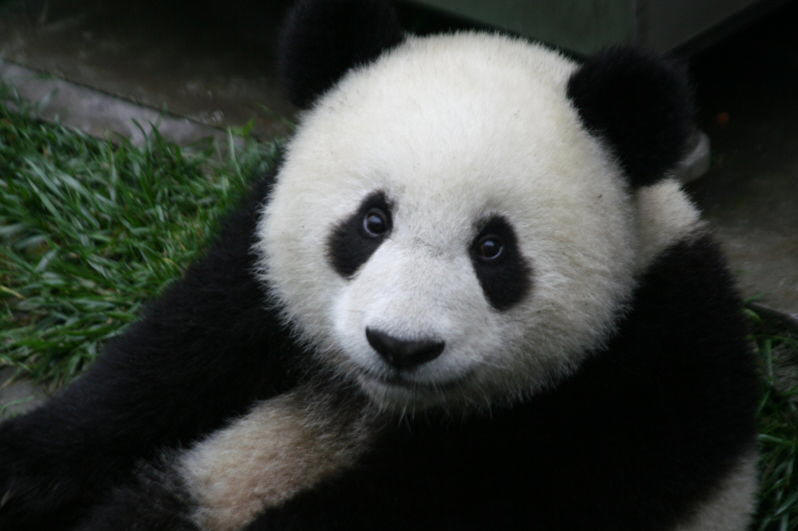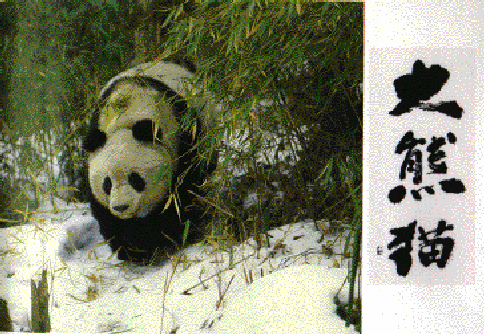| Desciption | Diet | Conservation | Reproduction | The Name |
|---|
|
of SE Asia |
Classification kingdom:Animalia Phylum:Chordata Class:Carnivora Family:Ursidae Genus:Ailurpoda Species: A. Melanoleuca |
|
|
Description: The usual color of the Giant Panda is Black, white, and grey. Adults measure to1.5 m long and 75 cm tall. Panda's weigh from 200 to 253lbs on average. The panda can live up to 20 to 30 years. The panda has with a thumb and five fingers. The thumb helps the panda to help hold bamboo shutes. Pandas usually live in mountainous regions such as Sichuan, Gansu, Shaanxi, and Tibet. The Giant Panda replaced the old emblem of China, the Chinese dragon. |
|
Diet: Despite being a Carnivore, the Giant Panda is primarily herbivorous. Its diet consists mostly of bamboo. The Panda can consume up to 20 to 30lbs of bamboo shute a day. There are twenty-five species of bamboo that are eaten by pandas in the wild, but it is hard to live in the remains of a forest and feed on dying plants in a rugged landscape. Only a few bamboo species are widespread at the high altitudes pandas now inhabit. Bamboo leaves contain the highest protein levels although stems have less. Because of the synchronous flowering, and death, pandas must have a least two different species available in their range to avoid starvation. The panda's round face is an adaptation to its bamboo diet. Their jaw muscles attach from the top of the head to the jaw. Large molars crush and grind the Bamboo shute. While primarily herbivorous, the panda has decidedly ursine teeth, and will eat meat, fish, and eggs when available. In captivity, zoos typically maintain the pandas' bamboo diet, although some will provide specially formulated biscuits or other dietary supplements. |
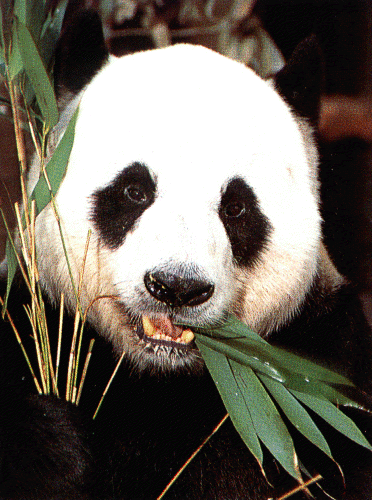 |
|
Conservation: The Giant Panda is an endangered specie do tho the fact of the loss of habitat. They have always been targeted by poachers, which is why the Wolong National Nature Reserve was set up in 1958. It was set up to help the decline of the pandas. Because of pollution and destruction of their natural habitat, and segregation due to caging, reproduction of wild pandas was severely limited. But in the 1990's several laws were put into action to help save these animals. |
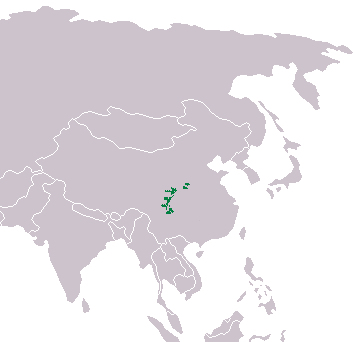 |
|
Reproduction: A female Panda may have up to 3 cubs in her entire lifetime. They reach sexual maturity by the age of 7 years old. Mating season is usaully between March and May. When it is at this time males begin to compete for the female. The strongest becomes the mate. The Gestation takes up to 190 days. When the baby is born, it is pink, furless, and blind. The baby nurses from 6 to 14 times a day. At 70 to 90 days the baby is able to crawl and at two years the baby is able to live on its own. |
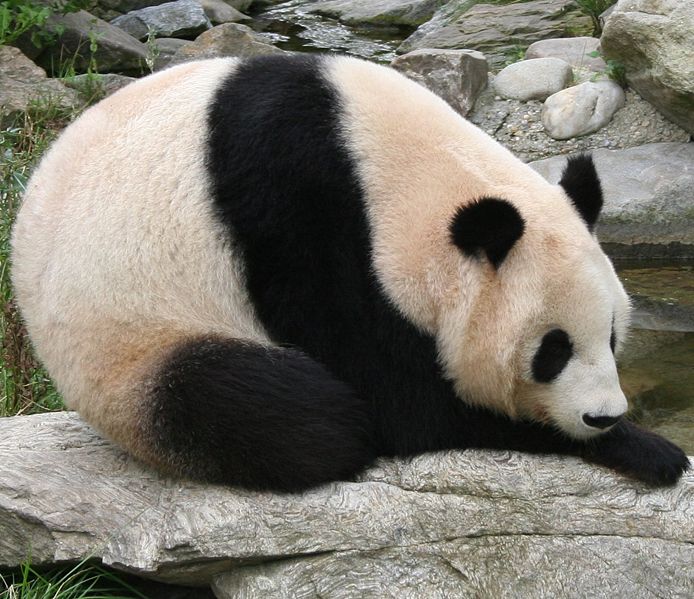 |
|
Name The name panda originated in the Himalayas. In the Chineses language it is called Hanyu Pinyin or large bear cat. They were inspired by that name because the panda has slits as pupils. |
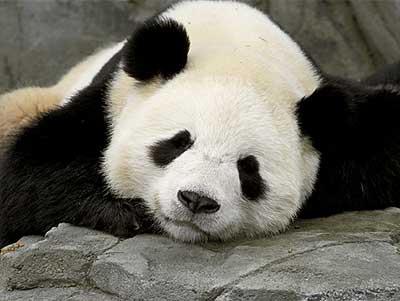 |
| Giant Panda-Wikipedia, the free encyclopedia |
|---|
